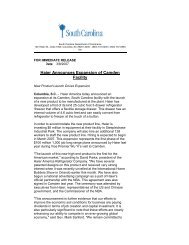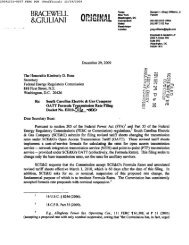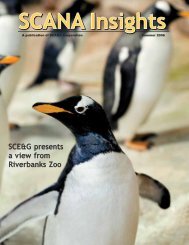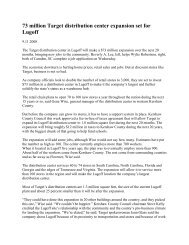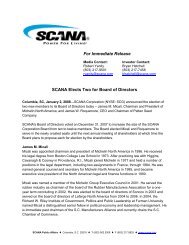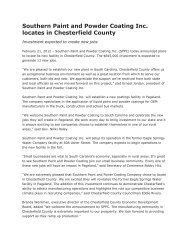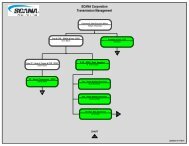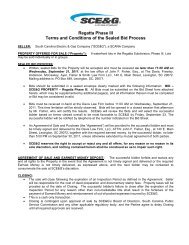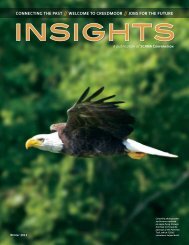Summer 2007 - SCANA Corporation
Summer 2007 - SCANA Corporation
Summer 2007 - SCANA Corporation
Create successful ePaper yourself
Turn your PDF publications into a flip-book with our unique Google optimized e-Paper software.
Vance-Providence<br />
Elementary School<br />
students experience<br />
the mystery and<br />
beauty of the Francis<br />
Beidler Forest.<br />
explains Norman Brunswig,<br />
executive director of Audubon<br />
South Carolina.<br />
Nestled among towering<br />
trees, the screened, open-air<br />
classroom is perched on the<br />
edge of the swamp, creating<br />
the perfect opportunity for<br />
spontaneous observation<br />
sessions.<br />
Sixty children from Vance-<br />
Providence Elementary in<br />
Orangeburg County are here to<br />
participate. Vance-Providence<br />
has a long-standing relationship<br />
with SCE&G as one of the more<br />
than 30 SCE&G Homework<br />
Centers in schools in North<br />
Carolina, South Carolina<br />
and Georgia.<br />
Managed by the National<br />
Audubon Society, Francis<br />
Beidler Forest, a registered<br />
National Natural Landmark, is<br />
a part of Four Holes Swamp.<br />
The forest covers the central<br />
and southeast portions of the<br />
swamp-stream system as it<br />
meanders through Orangeburg<br />
and Dorchester counties on its<br />
way to the Atlantic Ocean.<br />
In the 1890s Francis<br />
Beidler, a lumber baron,<br />
purchased a tract of land in the<br />
swamp with the intention of<br />
logging its cypress. But after<br />
journeying west and visiting<br />
Yellowstone National Park, Beidler became a champion<br />
of conservation and steadfastly refused to log in the area.<br />
Following his death in 1924, family members<br />
maintained the integrity of the land, and in the 1960s<br />
The Nature Conservancy and the National Audubon<br />
Society combined their resources to purchase what is<br />
now Francis Beidler Forest. An additional 909 acres<br />
were acquired in October 2003.<br />
Visitors wander past ancient trees, blackwater<br />
swamp, clear pools and wildlife along a 1.75-mile<br />
elevated boardwalk that starts and ends at the visitors’<br />
center. Along the self-guiding trek are plenty of<br />
benches to pause for observation and reflection of this<br />
pristine sanctuary.<br />
In the still, humid heart of the forest, ancient<br />
groves of bald cypress trees stretch skyward their<br />
shaggy, reddish trunks, towering over clear pools and<br />
blackwater sloughs. Within its 15,000 acres stands the<br />
largest virgin bald cypress and tupelo gum swamp forest<br />
left anywhere in the world. Some of the sanctuary’s<br />
cypresses have been dated at 1,100 years old and exceed<br />
nine feet in diameter.<br />
Species of oak, ash, tupelo and black gum make up<br />
an understory that grows as high as 70 feet, filling the<br />
vaulted spaces between the towering cypresses. The<br />
characteristic “blackwater” is actually clear but appears<br />
black due to the tannic acid in the bark and leaf litter on<br />
16 INSIGHTS • SUMMER <strong>2007</strong>



